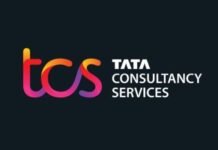
In the early 2000s, Vedanta faced the aspirational task of turning around distressed PSUs inherited from the Government of India. With iconic PSUs like BALCO and HZL under our wing, we had to ensure their legacy continued while also attracting younger Generation Y and Generation Z professionals to our workforce.
Two decades later, we have not only successfully transformed multiple PSUs but also established ourselves as an “employer of choice”. This has happened not in spite of, but because of a culturally and generationally diverse workforce with shared vision and aspirations.
Managing a multi-generational workforce comes with its own share of opportunities & challenges. This can include designing policies and programs, building synergy within multigenerational teams, and becoming an aspirational workplace for high-potential talent across all age groups.
“While employees across generations value Respect, Empowerment, Recognition, and Fairness; there exist distinct preferences in terms of career aspirations, prioritizing flexibility, mobility, benefits, stability, etc.” For instance, Millennials and Gen Z prefer a dynamic & digital workplace that gives them New Challenges, Learning Opportunities, and a variety of roles. On the other hand, Boomers prefer stability – whether it be in terms of location, or growth.
“However, when different generations come together to fulfil a shared vision, they can create significant value by learning from and inspiring each other”. To make such a synergy possible, we need to consider the needs and aspirations of all generations.
- Building a Diverse Workforce: A multi-generational workforce is one component of a diverse workforce. Building diversity provides the platform to understand the work preferences, communication styles, and expectations of different groups. When we encourage diversity in teams, right from campus recruitment to C-Suites, we also indirectly allow more avenues for cross-generational dialog.
- Create Mentoring Opportunities: Mid and Senior level leaders (Gen X and above) are instrumental in shaping the structure and culture of the place where we work in. For them, engagement is often driven by recognition of their experience and contributions, as well as opportunities to mentor and train younger employees. Every talent identification & development initiative must be paired with robust anchoring/mentoring initiatives.
- Cross-Functional Movement & Collaboration: While historically we have seen employees focussed on mainly vertical growth & promotions, Millennials today are showing interest in horizontal movement. This comes from their desire to learn, acquire new skills, and become well-rounded professionals.
- Opportunities to Contribute to a greater purpose: Most organizations have well-established social responsibility programs. Encouraging employees to volunteer in social & environmental initiatives provides a platform for multi-generational teams to interact and have conversations.
- Leveraging Digital Communication Channels: Gen Z is technology native and prefers digital communication channels. We have adopted digital communication channels and actively engaging in social media platforms to cater to their communication preferences. This shift has prompted earlier generations to adapt and seamlessly collaborate with the Millennials and Gen Z workforce.
In conclusion, understanding the generational differences in the workforce is crucial to developing an effective employee engagement strategy. By catering to the specific needs of each generation, we can create a more engaged and productive workforce. In the end, it’s all about people, and irrespective of generation, everybody is looking forward to a better tomorrow!








